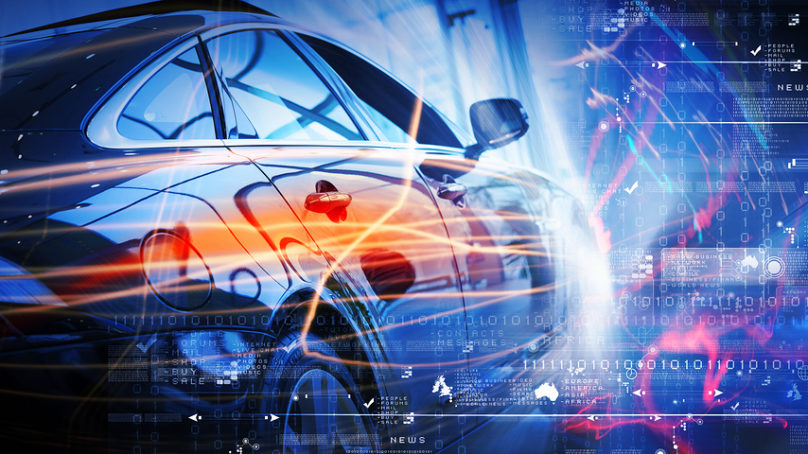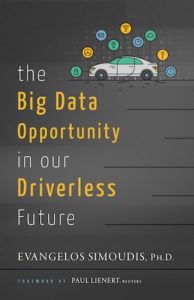
Early in 2016, GM invested $500M in ridesharing company Lyft and reportedly paid close to $1 billion to acquire Cruise Automation, a 40-employee, Silicon Valley-based, venture-funded startup that was developing driverless vehicle technology. A few months earlier Toyota had announced that it would invest $1 billion on artificial intelligence research, one of the key technologies making driverless vehicles possible.
These moves by the world’s largest automakers, along with related moves by other incumbents, show that the automotive industry is starting to understand that it can be disrupted in ways that we haven’t seen in the 100 years since the invention of the automobile. The disruption will come as we try to address important societal and urban challenges through our approaches to mobility. It will be the result of changing attitudes toward car ownership, technology innovations, and business model innovations. The disruption will be catalyzed by the Autonomous, Connected, and Electrified (ACE) vehicle in conjunction with a variety of on-demand mobility services under a hybrid model that blends car ownership with on-demand car access. Big data coming from inside and outside the ACE vehicle combined with machine intelligence technologies used for the exploitation of this data are key ingredients in next-generation mobility. Together they offer a unique, and still overlooked, value-creation opportunity in a driverless future.
What is causing a company like GM to pay such a sum to acquire a tiny startup, for Toyota to commit such a large amount on artificial intelligence research, and for almost every major automaker to establish a technology center in Silicon Valley? Try to imagine commuting in a driverless vehicle during the rush hour in a city like Los Angeles. In addition to being freed from the stress caused by rush hour traffic, and using the commuting time in any way you like, you will not have to worry about the issues associated with arriving at your destination: Where can I find parking? How close to my destination will I be if I park in a particular location? Will I need to drive or could I walk to arrive at my next meeting on time? Answers to these questions impact the customer experience and particularly the experience younger consumers are starting to expect. And because of these changing expectations, consumers will impact the business of the incumbent automotive and transportation industries. With their recent actions, the automotive industry incumbents are attempting to acquire or develop the technology that is rapidly becoming table stakes for next-generation mobility and thus address an emerging disruption risk that a driverless future will bring.
But billion-dollar acquisitions and investments, though impressive, are not sufficient by themselves to address the disruption risk the incumbent automotive industry is facing. The industry will need to:
- Transform from designing and manufacturing vehicles, to offering transportation experiences that will be based on insights derived from understanding the changes in consumer expectations and preferences;
- Adopt different approaches to innovation. They must devise new corporate innovation strategies that combine technology innovations with the right business model innovations like startups in Silicon Valley, Israel, and China are doing routinely, and make the appropriate organizational and cultural changes in order to make the transformation successful;
- Designate big data and its exploitation using machine intelligence as a strategic imperative and invest heavily and over a long period in these technologies in which they have little or no competence.
My book, The Big Data Opportunity In Our Driverless Future, attempts to answer seven questions relating to the big data and machine intelligence in the context of driverless vehicles and the mobility services they enable. Today’s vehicles are collections of electromechanical components that are controlled by a large number of microprocessors running disparate but increasingly complex software. ACE vehicles are robots on wheels. As such, not only do they rely on more complex software, but also they are generators and consumers of big data. Incumbent automakers and the startups working with ACE vehicles—and the mobility services they enable—don’t have experience with the types of data generated in these environments. The seven questions addressed by the book aim at helping them create a roadmap to successfully take advantage of the opportunities provided by big data and its exploitation using machine intelligence. These questions are:
- Is there a real threat to the automotive industry from ACE vehicles and the mobility services offered around them?
- Is big data associated with ACE vehicles and next-generation mobility a strategic area that deserves the automotive industry’s attention—and particularly the attention of incumbents?
- Can big data and machine intelligence be leveraged and used as an effective and long-term advantage by the automotive industry incumbents to provide personalized transportation solutions, in addition to enabling driverless vehicle navigation?
- Could the incumbent automotive industry benefit from making big data and machine intelligence strategic imperatives even if they don’t change their business models and adopt ACE vehicles and associated mobility services, or do they need to transform more radically?
- What do the automotive incumbents, and particularly the automotive OEMs, need to do in order to capitalize on this big data advantage?
- How would big data and machine intelligence enable the offering of better transportation experiences including sharing of ACE vehicles and thus addressing social and urban problems?
- Will future consumers of mobility services attach more brand value to traditional automotive companies and brands (e.g., Ford, Chevrolet, Lexus), to technology brands offering such services (e.g., Apple, Google, Amazon) or to the mobility providers themselves (e.g., Uber, Lyft)?
One of the areas discussed in the book in the process of addressing these seven questions is how technology and business model innovations address certain societal and urban challenges that are starting to disrupt the automotive and transportation industries.

The Mercedes-Benz autonomous F 015 concept car doubles as a rolling lounge.
Autonomous and driverless vehicles require innovations in four technology areas: hardware, software, connectivity, and big data, including high-definition maps. These vehicles are big data platforms, and are supported by big data platforms. But big data is the one area where the automotive industry incumbents in particular have the least experience, even though it is the one that can impact a broad set of outcomes, from vehicle navigation to vehicle personalization, fleet optimization, provision of personalized consumer transportation solutions, and many others. But while we are often in awe of the technological innovations in ACE vehicles, we have not paid as much attention to the business model innovations that are enabled by these technologies.
This is because for the longest time vehicle ownership was the de facto model. Vehicle ownership involves a limited set of well-understood business models. One could buy a vehicle or lease it under a relatively long-term contract. Car rental was considered only as part of long-distance travel, even when only a small amount of driving was involved in such travel, and taxis were the only viable alternative to mass transit in cities.
The connected vehicle started to enable new business models in many industries that work around the automotive industry. For example, states are starting to experiment with taxing consumers by the mile traveled, insurance companies are starting to roll out usage-based policies, the entertainment industry has adopted streaming radio and video subscription models, and the advertising industry is employing online advertising on vehicle maps to monetize services and content.
However, the arrival and fast consumer acceptance of on-demand mobility services, such as ride-hailing, ridesharing, carsharing, and others, enabled by software, big data, and smartphone technologies, is emerging as the real business model disruptor of the automotive industry. For example, the dynamic pricing (surge pricing) business model offered by ridesharing services is enabled by technologies such as location-based services (big data) software and GPS, the sophisticated analysis of traffic data, analysis of consumer demand data, and analysis of driver-supplied data. Similarly, carsharing service companies like Zipcar are testing a business model to charge drivers per mile driven rather than per hour. On-demand mobility services enable consumers to have access to vehicles without owning them, and, more broadly, shape the future of mobility while addressing a variety of societal and urban challenges. This is starting to lead to a big shift from the notion that puts car ownership at the center to one that puts car access at the center, with access provided by on-demand mobility services. In fact, because of the advantageous economics offered by ACE vehicles, companies offering ride-hailing, ridesharing, and carsharing will be the first adopters of these vehicles.
The automotive industry as we know it today has emerged from a group of startups, many of which were established in Detroit, a city that at the turn of the 20th century was an innovation cluster, quite similar to today’s Silicon Valley. Over the years, the industry has weathered many challenges, several due to economic downturns, most recently in 2009, and others due to regulation and globalization. It always found a way to succeed through innovation and come out stronger. However, its overall business model has never been challenged for the past 100-plus years of its existence in the way it is being challenged today by both startups and large corporations that are newcomers to the automotive industry. Today it has again the opportunity to disrupt in the coming driverless and on-demand mobility future. However, this time, in order to succeed it will need to make fundamental changes, and among its strategic options, recognize and take advantage of the profound and long-term opportunities provided by the broad exploitation of big data.
About the Author
 Evangelos Simoudis is a recognized expert on big data strategies and corporate innovation. He has worked in Silicon Valley for 25 years as a venture investor, entrepreneur, and corporate executive. He is the co-founder and Managing Director of Synapse Partners, a venture firm that invests in early stage startups developing big data applications. Evangelos is advising several global corporations on their big data strategies and Startup-Driven Innovation. He has also served as Partner and Managing Director at Apax Partners and Trident Capital. In 2012 and 2014 he was named top investor in online advertising. Prior to his venture and advisory career Evangelos served President and CEO of Customer Analytics, and as Vice President of Business Intelligence at IBM. He serves on the advisory boards of Caltech’s Center for Information Science and Technology, the Brandeis International School of Business, New York’s Center Urban Science and Progress, and SAFE’s Autonomous Vehicle Task Force. Evangelos earned a PhD in computer science from Brandeis University and a BS in electrical engineering from Caltech.
Evangelos Simoudis is a recognized expert on big data strategies and corporate innovation. He has worked in Silicon Valley for 25 years as a venture investor, entrepreneur, and corporate executive. He is the co-founder and Managing Director of Synapse Partners, a venture firm that invests in early stage startups developing big data applications. Evangelos is advising several global corporations on their big data strategies and Startup-Driven Innovation. He has also served as Partner and Managing Director at Apax Partners and Trident Capital. In 2012 and 2014 he was named top investor in online advertising. Prior to his venture and advisory career Evangelos served President and CEO of Customer Analytics, and as Vice President of Business Intelligence at IBM. He serves on the advisory boards of Caltech’s Center for Information Science and Technology, the Brandeis International School of Business, New York’s Center Urban Science and Progress, and SAFE’s Autonomous Vehicle Task Force. Evangelos earned a PhD in computer science from Brandeis University and a BS in electrical engineering from Caltech.



